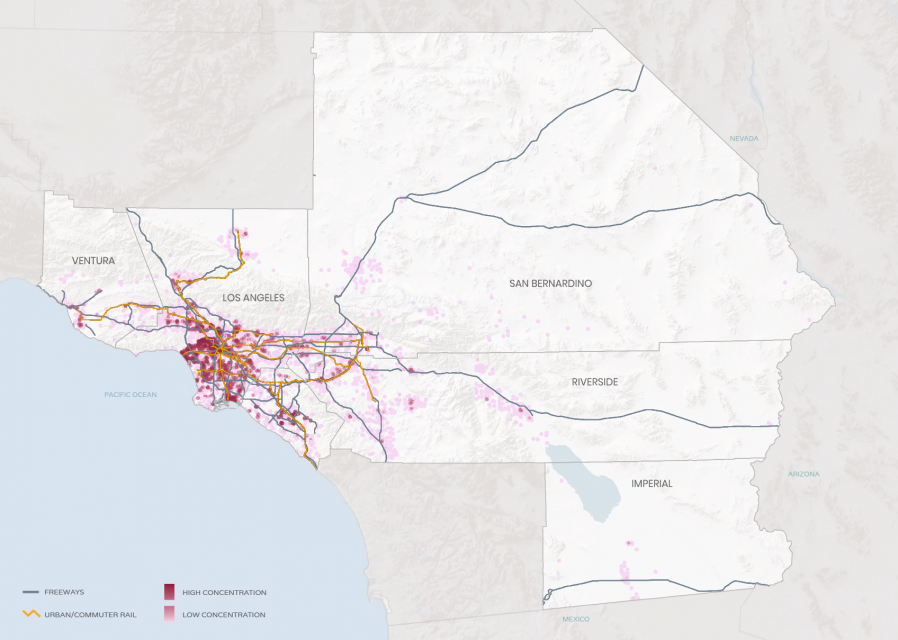Where Will We Grow?
The SCAG region consists of 191 cities and six counties in an area covering more than 38,000 square miles. Taking into consideration the 19.2 million people that already call Southern California home, as well as the expected increase of 3.6 million residents in the region by 2045, we must carefully consider how our region can accommodate growth while balancing resource conservation, housing demands, and economic expansion concurrently with a rapidly changing climate. These regional challenges necessitate thinking beyond jurisdictional boundaries.
At the same time, California is in the midst of a long-term structural housing shortage and affordability crisis. The housing crisis is a two-part problem – a shortage of housing and a lack of affordability. The region’s housing supply has not kept up with population growth. From 2006 to 2016, an additional 930,000 people called Southern California home. But over a comparable period, only one new housing unit was created for every 3.32 persons added. Many areas in Riverside and San Bernardino Counties were appealing for development due to the availability of lower priced land, which attracted new residents looking for larger or lower priced housing. Jobs, however, did not follow in proportion to housing unit growth in these communities. As a result, residents of the Inland Empire have to travel longer distances on average than other Southern Californians to reach their jobs, increasing congestion, automobile dependency, greater wear and tear on our roads, increasing traffic collisions, air pollution, and limiting the effectiveness of public transit.
SCAG Region Household Growth 2008-2016
The expansion of the region outwards has also had an impact on the natural habitat lands and farm and grazing lands in the region. These types of areas are at risk, with recent data showing that 21 percent of the SCAG region’s farmland has been lost between 1984 and 2016. As the population continues to grow, vital habitat and farmlands face severe development pressure. In addition to their respective roles in biodiversity and food production, both natural areas and farmlands help reduce the impacts of climate change by capturing greenhouse gases in the soil, plants, and trees instead of allowing them to concentrate in the atmosphere. There are inherent constraints to expansive regional growth, and areas that are susceptible to natural hazards and a changing climate must be recognized. Because of this, Connect SoCal emphasizes options that conserve important farmland, resource areas and habitat corridors, and de-prioritizes growth on lands that are vulnerable to wildfire, flooding and near term sea-level rise.
The dispersion of population into suburbs accelerated in the middle of the last century and was the result of the automobile becoming the focus of the region’s transportation system. However, even as early as the 1970s, the region’s development patterns started shifting with efforts to reclaim and develop population “centers” through regional planning. Accommodating growth in centers—whether transit centers, job centers, urban centers, or suburban centers—has served as the foundation of SCAG’s regional planning for decades with the aim of maximizing the value of infrastructure investments and enabling shorter trips to improve air quality and reduce congestion.
Sustainable Development in the Region
Several factors today will inform the planning decisions that will need to be made to accommodate our region’s population growth such as demographic shifts, transportation preferences, housing affordability, and housing development trends. Connect SoCal will not only have to match planned transportation investments with a regional development pattern to sustain anticipated levels of population and economic growth, it must also strive to reduce greenhouse gas emissions by decreasing reliance on single occupancy vehicles and the distances people drive to work and access goods and services.



